September 2023
By Frank N. von Hippel
In the new film Oppenheimer, the protagonist, J. Robert Oppenheimer, directs the secret U.S. Manhattan Project, to design, build, and test a new weapon of mass destruction. The ethical issues are obvious, but the fear that the Nazis have a nuclear bomb project swamps those concerns until it becomes clear, after the Allied forces crossed the Rhine into Germany in the spring of 1945, that the Nazi initiative never got off the ground.
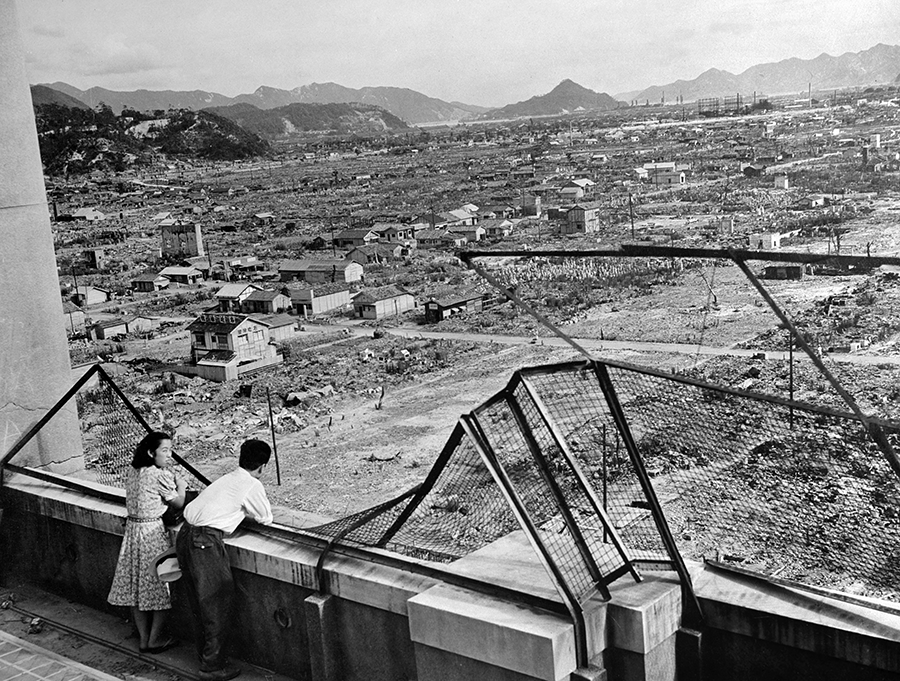 In the movie, some Manhattan Project scientists petition against using nuclear weapons against Japan, but they are too late. Before Japan surrenders, two atomic bombs with explosive powers equal to 15 kilotons and 20 kilotons of chemical explosive, respectively, kill an estimated 220,000 civilians in the Japanese cities of Hiroshima and Nagasaki. Later, Oppenheimer says to President Harry S Truman, “Mr. President, I feel I have blood on my hands.”
In the movie, some Manhattan Project scientists petition against using nuclear weapons against Japan, but they are too late. Before Japan surrenders, two atomic bombs with explosive powers equal to 15 kilotons and 20 kilotons of chemical explosive, respectively, kill an estimated 220,000 civilians in the Japanese cities of Hiroshima and Nagasaki. Later, Oppenheimer says to President Harry S Truman, “Mr. President, I feel I have blood on my hands.”
The ability of nuclear weapons to kill catastrophic numbers of living beings still haunts people of conscience. Today, the explosive yield of the average U.S. nuclear warhead is equivalent to 200,000 tons (200 kilotons) of chemical explosive, or about 100,000 times the yield of the improvised explosive that, in 1995, destroyed the front one-third of the Alfred P. Murrah federal building in Oklahoma City, killing 168 people, incinerating dozens of cars, and damaging more than 300 buildings.1
Those 200 kilotons are vastly in excess of what would be required to destroy most military targets of the major U.S. adversaries. A single such explosion in an urban area could kill hundreds of thousands of civilians, dwarfing Russian President Vladimir Putin’s war crimes in Ukraine. This colossal lethality is not the only choice available to U.S. war planners. U.S. bombs and cruise missile warheads have a “dial-a-yield” feature that allows their explosive yields to be reduced to as little as 300 tons, but this low-yield option has not been added to the U.S. ballistic missile warheads that, in a contemporary conflict, would be used to attack hundreds of command-and-control targets in Russian and Chinese urban areas. Only a couple of dozen of U.S. ballistic missile warheads have had their yields reduced to about 10 kilotons, and the rationale for that move was not to reduce civilian casualties, but to make it more credible that the United States would retaliate with nuclear weapons if Russia struck first with low-yield tactical nuclear weapons. It is time for the U.S. Congress to consider whether this nuclear stockpile is consistent with the international laws of war and whether, at a minimum, it should require that low-yield options be installed in all U.S. ballistic missile warheads.
The Lesson of Hiroshima
The problem with using nuclear explosives as weapons on military targets in urban areas was made clear by the bombing of Hiroshima, which was described initially by Truman as “an important Japanese Army base.” He soon learned that a city and a large fraction of its civilian inhabitants had been destroyed along with the base. On August 10, the day after the Nagasaki bombing, he refused to authorize the dropping of a third bomb on a third Japanese city, explaining that he did not like the idea of “killing all those kids.”
The impact of nuclear weapons on civilians became more widely understood in 1946 after The New Yorker published John Hersey’s stories of six survivors of the Hiroshima bombing: a young female clerk, a physician, a mother, a German priest, a surgeon, and a pastor. The article subsequently became a book, Hiroshima, that sold millions of copies.
The Advent of Higher-Yield Thermonuclear Warheads
Three years later, after the United States detected radioactivity in the atmosphere from the first Soviet test of a fission bomb, the Truman administration asked the Atomic Energy Commission’s General Advisory Committee to consider a proposal to develop much more powerful thermonuclear, or hydrogen bombs (H-bombs), as urged by the nuclear physicist-veterans of the World War II nuclear weapons project: Edward Teller, Ernest Lawrence, and Louis Alvarez. The committee was chaired by Oppenheimer, and its membership included James Conant, the president of Harvard University, who oversaw all U.S. wartime military research programs; Enrico Fermi, the legendary Italian physicist who led the effort to design the reactors that produced the plutonium for the Nagasaki bomb and tens of thousands more warheads during the Cold War; and I.I. Rabi, who later served as President Dwight D. Eisenhower’s first science adviser.
The committee’s conclusion was that the hydrogen bomb “is not a weapon which can be used exclusively for the destruction of material installations of military or semi-military purposes. Its use therefore carries much further than the atomic bomb itself the policy of exterminating civilian populations.… We are all agreed that it would be wrong at the present moment to commit ourselves to an all-out effort toward its development.”2 That advice was swamped, however, by the panic created by the Soviet test and by the possibility that Moscow might get the H-bomb first. About five years later, the United States and Soviet Union tested deliverable thermonuclear weapons.
The average explosive yield of U.S. nuclear weapons peaked in 1957.3 Thereafter, the focus of the U.S.-Soviet nuclear arms race shifted to the development of lightweight but still very powerful nuclear explosives that would enable a single bomber carrying cruise missiles or a ballistic missile carrying multiple independently targetable reentry vehicles to attack simultaneously multiple targets separated by hundreds of kilometers.
In the 1970s, the average yield of U.S. nuclear weapons stabilized at about 200 kilotons of chemical explosive, about 10 times more powerful than the bombs used on Hiroshima and Nagasaki. The average yield of Russia’s warheads was similar.
Areas of Destruction
Scaled from the five square miles flattened and burned by the Hiroshima bomb, the destructive blast area of a 200-kiloton warhead would be about 30 square miles, roughly the size of San Francisco. The area burned by fire could be twice as large, and the area in which the radioactive fallout from a groundburst would be lethal to unsheltered people could be two to three times larger still.4
Initially, such large areas of destruction were seen as beneficial to nuclear stability. Robert McNamara, President John Kennedy’s secretary of defense, was told in 1963 that, irrespective of whether the United States or the Soviet Union struck first, both countries would suffer tens of millions of deaths.5 This concept soon came to be known as mutually assured destruction. Some nuclear strategists, including James Schlesinger, who eventually became defense secretary, advocated an alternative counterforce strategy in which the United States would attack the locations of Soviet nuclear and conventional weapons and related scientific and industrial support infrastructure. This seemed more legitimate than attacking the other country’s population. Leadership and military command and control, however, were targeted as well, and those targets are mostly in cities.
Consider, for example, Russia’s counterpart to the Pentagon, the complex that houses Russia’s General Staff, which is located near the Kremlin and is one of the highest-priority nuclear command-and-control facilities on the U.S. target list. Central Moscow has a population density of about 30,000 persons per square mile. A rough estimate of the consequences of a 200-kiloton airburst over the General Staff complex finds that more than a quarter million civilians would be killed and 1 million others seriously injured.6
This example is far from unique. Bruce Blair, who discussed such questions at length with former commanders-in-chief of the U.S. Strategic Command, commented in 2020, in his last article, “It takes a herculean sleight of mind to reconcile the law of armed conflict with a U.S. nuclear target plan that includes around 1,500 aimpoints, many hundreds located inside large cities in Russia and China.”7
Originally, the justification for large warhead yields was as compensation for uncertainties in the locations of targets and the poor delivery accuracy of early U.S. bombers and ballistic missiles. Yet, reconnaissance satellites revealed the precise locations of most targets 50 years ago. The accuracy of modern cruise missiles has become well known as a result of the U.S. use of about 2,000 sea-launched Tomahawk cruise missiles with conventional explosive warheads for attacks on Iraq in 1993, 1996, and 2003; Serbia and Montenegro in 1999; Afghanistan in 2001; Libya in 2011; and Syria in 2017.8 U.S. long-range ballistic missiles also have become more accurate.
Nuclear Weapons and the Law of War
The 1977 Additional Protocols to the 1949 Geneva Conventions made “indiscriminate” killing of civilians a war crime. For more than three decades, the United States insisted that this law of war did not apply to nuclear weapons. In 2013, however, the Obama administration announced that nuclear targeting “must also be consistent with the fundamental principles of the Law of Armed Conflict. Accordingly, plans will, for example, apply the principles of distinction and proportionality and seek to minimize collateral damage to civilian populations and civilian objects.”9
 A former commander-in-chief of Strategic Command has reported, however, that in practical applications the translation of this presidential guidance became “minimize civilian damage to the extent possible consistent with achieving objectives.”10 Giving priority to “achieving objectives” resulted in command and control and other nuclear-related targets in urban areas being kept on the U.S. nuclear target list. Blair reported in 2018 that “100 [U.S. nuclear] aimpoints dot the greater Moscow landscape alone.”11 This is consistent with a detailed 2001 nongovernmental effort to reproduce the U.S. nuclear war plan for Russia, which identified 362 “leadership command, control and communication” targets in Russia, of which 87 were located in Moscow.12
A former commander-in-chief of Strategic Command has reported, however, that in practical applications the translation of this presidential guidance became “minimize civilian damage to the extent possible consistent with achieving objectives.”10 Giving priority to “achieving objectives” resulted in command and control and other nuclear-related targets in urban areas being kept on the U.S. nuclear target list. Blair reported in 2018 that “100 [U.S. nuclear] aimpoints dot the greater Moscow landscape alone.”11 This is consistent with a detailed 2001 nongovernmental effort to reproduce the U.S. nuclear war plan for Russia, which identified 362 “leadership command, control and communication” targets in Russia, of which 87 were located in Moscow.12
In 2022, in response to reports of too many civilians being mistakenly targeted and killed by U.S. drone attacks, the U.S. Department of Defense issued a Civilian Harm Mitigation and Response Action Plan.13 In his cover letter, Secretary of Defense Lloyd Austin stated, “We will ensure that we are well prepared to prevent, mitigate, and respond to civilian harm in current and future conflicts, including by integrating civilian protection into our mission objectives from the start.” Eleven combatant commands were required to “incorporate [Civilian Harm Mitigation and Response] lessons learned and recommendations into current joint targeting processes to reduce the risk of civilian harm in future operations.” It specifically required “scalable yields” to be considered for future weapon systems. One of those 11 commands was Strategic Command, which is responsible for planning potential nuclear attacks against nuclear-armed adversary nations, Russia and China in particular.
The secrecy of Strategic Command’s target-selection process conceals it from congressional and public view, even from the civilians in the Pentagon. When Defense Secretary Dick Cheney finally forced a review by a civilian in 1989-1991, he learned that the targeting process was driven by interservice competition for targets. Adjacent facilities of adversaries, even parts of the same facility, were targeted separately to justify larger U.S. nuclear forces; and artifices were contrived to work around strictures against targeting densely populated areas, such as considering only where people live at night and not where they work during the day.14 This review facilitated the dramatic post-Cold War reduction of the number of deployed U.S. nuclear warheads. There is no indication, however, that it reduced the focus on targeting leadership and command-and-control sites in urban areas.
A Proposal to Reduce U.S. Warhead Yields
In 2009, Steven Younger, a nuclear weapons designer who later served as director of Sandia National Laboratories, where the electronic controls for U.S. nuclear warheads are designed, published a book, The Bomb, in which he observed, “Missile accuracies have greatly improved since the last nuclear weapon was introduced into the U.S. stockpile in the 1980s, but there has been no political support to follow through with a reduction in the yields of our nuclear weapons.”15 Younger proposed that, for many targets, nuclear warheads could be replaced by non-nuclear weapons such as accurate conventional explosive warheads, explosion-powered electromagnetic pulse generators, and cyberattack systems.
For targets whose destruction still would require the use of nuclear weapons, he argued that 90 percent could be destroyed by warheads with a yield of about 10 kilotons, 5 percent of the current average 200-kiloton yield of U.S. warheads, and most of the rest can be destroyed with 500-kiloton earth-penetrating weapons. Russia’s General Staff complex, which is reportedly underlain by bunkers and tunnels “beneath a thick layer of concrete,”16 might be a candidate for one of Younger’s 500-kiloton warheads but at enormous cost in civilian casualties.
Shifting from hundreds of kilotons to 10-kiloton warheads would be a step back from H-bomb levels of destruction, but would still be at Hiroshima levels. Much better would be to replace the warheads with precision-guided conventional weapons.
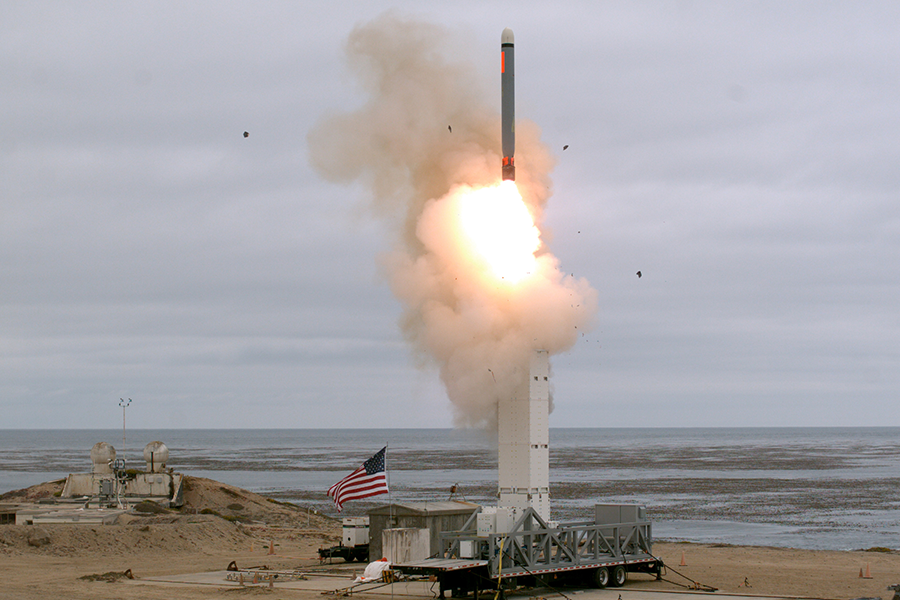 The yields of U.S. warheads could be reduced to about 10 kiloton by replacing their fission-fusion second-stage explosives with inert objects of equal weight, as reportedly has been done for about 25 U.S. submarine-launched warheads. Yields could be reduced further without removing the secondary explosive by turning off the injection of deuterium-tritium fusion gas that boosts the yield of the fission “primary” explosive. Indeed, U.S. nuclear bombs and the warheads of U.S. nuclear-armed cruise missiles already have a dial-a-yield feature that reportedly allows a reduction of their explosive power from about 100 kilotons to as low as 0.3 kiloton.17
The yields of U.S. warheads could be reduced to about 10 kiloton by replacing their fission-fusion second-stage explosives with inert objects of equal weight, as reportedly has been done for about 25 U.S. submarine-launched warheads. Yields could be reduced further without removing the secondary explosive by turning off the injection of deuterium-tritium fusion gas that boosts the yield of the fission “primary” explosive. Indeed, U.S. nuclear bombs and the warheads of U.S. nuclear-armed cruise missiles already have a dial-a-yield feature that reportedly allows a reduction of their explosive power from about 100 kilotons to as low as 0.3 kiloton.17
This feature may have been added when the warheads were designed around 1980 so that they could be used as either tactical or strategic weapons. The bombs could be used by fighter-bombers against a Soviet tank force invading West Germany. The cruise missiles could be launched at the same targets from offshore ships and submarines. The United States was concerned about minimizing civilian casualties in its NATO ally, West Germany.
Yet, more than 98 percent of U.S. ballistic missile warheads on strategic missiles targeted on Russia and China still have fixed yields reportedly ranging from 90 to 455 kilotons. These warheads would be used to target nuclear command-and-control installations in urban areas. Bombers and cruise missiles would be too slow.
The Debate Over Yield Reduction
The Trump administration’s 2018 Nuclear Posture Review expressed concern about “Moscow’s perception that its greater number and variety of non-strategic nuclear systems provide a coercive advantage in crises and at lower levels of conflict.” The United States already had about 1,000 bombs and air-launched cruise missile warheads with low-yield options, but the Trump administration ultimately decided to close the “variety” gap by altering a few tens of the several hundred 100-kiloton W76 warheads deployed on U.S. submarine-launched ballistic missiles to produce yields of about 10 kilotons18 and developing a new nuclear-armed submarine-launched cruise missile.
As with earlier proposals for low-yield warheads, the Trump administration’s proposal was controversial. It would reduce the casualties from the use of small numbers of nuclear weapons, but their reduced yield might make easier the transition from conventional to nuclear weapons in a conflict.
As one critic pointed out, however, if Russia threatened to use nuclear weapons, it would be because it was losing a conventional war.19 During the Cold War, when the Soviet Union had numerical superiority in conventional weaponry, the same logic drove NATO to place nuclear artillery units in the path Warsaw Pact forces were expected take if they crossed the inter-German border. About one-quarter of U.S. deployed warheads already have low-yield options. Having such options for ballistic missile warheads as well would not lower the threshold for nuclear war. As President Joe Biden said in 2022, “I don’t think there's any such thing as the ability to easily [use] a tactical nuclear weapon and not end up with Armageddon." To limit NATO’s support of Ukraine, Russian President Vladimir Putin keeps reminding that he has nuclear weapons, but he also declared in December 2022, “[W]e have not lost our minds; we are well aware of what nuclear weapons are.… [W]e are not going to wield these weapons like a razor running around the globe.”
All nuclear-weapon states understand that there is a clear line between conventional and nuclear war but that, beyond that, there is no clear line this side of Armageddon. Some have expressed concerns that a nuclear-armed target country would not know that incoming conventionally armed long-range ballistic missiles were not nuclear until they arrived and thus might launch its nuclear missiles on warning. This is a legitimate disincentive for launching missiles of any type against a nuclear-armed country. Yet, if that decision has been made and a conventional warhead could accomplish the goal of incapacitating a communications tower in an urban area without killing 100,000 civilians, for example, that would be the choice required by the laws of war.
An alternate justification for not targeting leadership and command-and-control targets in urban areas is because such a decapitation strategy has such a low likelihood of success. There are too many fallback routes for sending out the launch command. Also, in Russia’s case, the leadership has devised a “Dead Hand” strategy, in which if the leadership receives a warning on its early-warning sensors of an incoming attack, it can activate the so-called Perimeter system. That means, if seismic, light-flash, and other sensors agree that they have detected nuclear explosions and communications with the leadership in Moscow go dead at the same time, a crew in a central superhardened launch control center would send out the signal to launch a nuclear retaliatory strike.20
Other Policy Options
As with others who lived through the Cold War, Biden knows viscerally the fear of nuclear annihilation. Nearly four decades after the fall of the Berlin Wall, however, the danger of nuclear war has become an abstract concept to most people. The necessity to maintain nuclear deterrence at an adequate level is invoked regularly to assure funding for modernizing U.S. nuclear warheads and their delivery vehicles. Yet even with Putin’s threats, it is difficult to imagine that nuclear weapons could be used deliberately. Few people are aware of the launch-on-warning postures that bring with them the possibility of a nuclear war by accident.
The ultimate goal must be to eliminate these weapons. That was recognized in the conferences on the humanitarian consequences of nuclear weapons use that led to the 2017 Treaty on the Prohibition of Nuclear Weapons. Despite the danger to their own citizens and to global civilization, the nuclear-armed states are resisting the pressure for disarmament. The ability to threaten nuclear destruction has become an integral part of their security strategies.
A first step could be to follow Younger’s advice and substitute conventional weapons for nuclear weapons wherever possible. Jeffry Lewis and Scott Sagan have proposed that the United States remove from its nuclear target list any structure that can be destroyed by a conventional weapon.21 The United States has large numbers of air- and sea-launched cruise missiles with conventional warheads for just such purposes.
There also has been a continuing interest in deploying long-range conventionally armed ballistic missiles. In 2005, General James Cartwright, commander-in-chief of Strategic Command, proposed a study of whether, with accuracy improvements, some fraction of the targets in the U.S. nuclear war plan could be destroyed by conventional warheads mounted on long-range ballistic missiles. Cartwright’s successor, Kevin Chilton, rejected the idea, arguing that conventional warheads would not have the same psychological impact as nuclear warheads.22 This suggests that the strategy of nuclear deterrence through assured destruction may live on under the cover of the nuclear targeting of command-and-control facilities in urban areas.
A second step would be to add the low-yield option to U.S. ballistic missile warheads and to call for other nuclear-armed states to do the same. The purported added deterrence value of having the higher yield would remain because it could be restored with the flip of a switch, but the lowest yield should be the default setting. That would confront decision-makers considering using higher-yield options and the lawyers advising them on the requirements of the law of war with the tradeoff of tens to hundreds of thousands of additional civilian deaths per urban target.
The low-yield option would fit naturally into the Defense Department’s new policy focus on civilian harm mitigation. Installation of a low-yield option in U.S. ballistic missile warheads could be included in the National Nuclear Security Administration’s ongoing campaigns to life-extend and improve nuclear warhead safety and security.
The fundamental ethical problem posed by nuclear weapons would remain, however. As was learned from Hiroshima and Nagasaki, the civilian consequences of using even low-yield warheads in urban areas are unacceptable.
ENDNOTES
1. U.S. Federal Bureau of Investigation, “Oklahoma City Bombing,” n.d., https://www.fbi.gov/history/famous-cases/oklahoma-city-bombing (accessed August 15, 2023).
2. Atomic Archive, “General Advisory Committee’s Majority and Minority Reports on Building the H-Bomb, October 30, 1949,” n.d., https://www.atomicarchive.com/resources/documents/hydrogen/gac-report.html (accessed August 15, 2023).
3. Office of Scientific and Technical Information, U.S. Department of Energy, “Summary of Declassified Nuclear Stockpile Information,” n.d., https://www.osti.gov/opennet/forms?formurl=https://www.osti.gov/includes/opennet/document/press/pc26tab1.html (accessed August 15, 2023).
4. Samuel Glasstone and Philip J. Dolan, eds., “The Effects of Nuclear Weapons,” U.S. Department of Defense and U.S. Department of Energy, 1977, https://www.osti.gov/servlets/purl/6852629. The maximum radius from ground zero for a given blast overpressure scales as yield Y1/3. If the atmosphere is clear, the slant radius from the center of the fireball for a given amount of radiant heat measured in calories per square centimeter scales as Y1/2. For fallout, the height of the cloud for a 200-kiloton surface burst is about 35,000 feet. Ibid., p. 431. From that height, the average fallout time is about six hours. Ibid., p. 458. The multiplier to get a two-week dose from a six-hour dose-rate/hour is about 20. Ibid., p. 403. A 600 rem two-week dose would correspond to a 30 rem/hour dose at six hours, which would extrapolate back to a theoretical one-hour dose rate of 260 rems/hour if all the radioactivity had fallen out immediately. Ibid., p. 392. For a 200-kiloton explosion with 50 percent of the yield coming from fission, the downwind distance of the one-hour dose rate contour of 300 rem/hour is 50 miles, and the maximum width is four miles. Ibid., p. 430. I multiply by a factor of π/4 to get the area of the corresponding oval.
5. Fred Kaplan, The Bomb: Presidents, Generals, and the Secret History of Nuclear War (New York: Simon & Schuster, 2020), p. 91.
6. Alex Wellerstein, “Nukemap,” n.d., https://nuclearsecrecy.com/nukemap/ (accessed August 15, 2023). Airburst altitude chosen to maximize area subject to 200 pounds per square inch overpressure.
7. Bruce G. Blair, “Loose Cannons: The President and US Nuclear Posture,” Bulletin of the Atomic Scientists, January 1, 2020, n.3, https://thebulletin.org/premium/2020-01/loose-cannons-the-president-and-us-nuclear-posture/.
8. Niall McCarthy, “Countries Hit by U.S. Tomahawk Cruise Missiles Since Desert Storm,” Forbes, April 7, 2017.
9. U.S. Department of Defense, “Report on Nuclear Employment Strategy of the United States Specified in Section 491 of 10 U.S.C.,” June 12, 2013, https://apps.dtic.mil/sti/pdfs/ADA590745.pdf.
10. Gen. Robert Kehler (ret.), “Commanding Nuclear Forces,” in Managing U.S. Nuclear Operations in the 21st Century, ed. Charles Glaser, Austin Long, and Brian Radzinsky (Washington: Brookings Institution Press, 2022), p. 149.
11. Bruce G. Blair, Jessica Sleight, and Emma Claire Foley, “The End of Nuclear Warfighting: Moving to a Deterrence-Only Posture,” Princeton University and Global Zero, September 2018, p. 36, https://www.globalzero.org/wp-content/uploads/2018/09/ANPR-Final.pdf.
12. Matthew G. McKinzie et al., “The U.S. Nuclear War Plan: A Time for Change,” Natural Resources Defense Council, June 2001, p. 103, https://www.nrdc.org/sites/default/files/us-nuclear-war-plan-report.pdf.
13. U.S. Department of Defense, “Civilian Harm Mitigation and Response Action Plan (CHMR-AP),” August 25, 2022, https://media.defense.gov/2022/Aug/25/2003064740/-1/-1/1/CIVILIAN-HARM-MITIGATION-AND-RESPONSE-ACTION-PLAN.PDF.
14. Franklin C. Miller, “Establishing the Ground Rules for Civilian Oversight,” in Managing U.S. Nuclear Operations in the 21st Century, ed. Charles Glaser, Austin Long, and Brian Radzinsky (Washington: Brookings Institution Press, 2022), pp. 53-70.
15. Stephen M. Younger, The Bomb: A New History (New York: Ecco, 2009), p. 41.
16. Alexander Vershinin, “Russia’s Military Command Center: Sending Orders From the Heart of Moscow,” Russia Beyond, January 4, 2018, https://www.rbth.com/defence/2016/01/04/russias-military-command-center-sending-orders-from-the-heart-of-moscow_555889.
17. Hans Kristensen, “The Flawed Push for New Nuclear Weapons Capabilities,” Federation of American Scientists, June 29, 2017, https://fas.org/publication/new-nukes/.
18. Amy F. Woolf, “A Low-Yield, Submarine-Launched Nuclear Warhead: Overview of the Expert Debate,” CRS In Focus, IF11143, January 5, 2021, https://crsreports.congress.gov/product/pdf/IF/IF11143/5.
19. Jon Wolfsthal, “Say No to New, Smaller Nuclear Weapons,” War on the Rocks, November 22, 2017, https://warontherocks.com/2017/11/say-no-new-smaller-nuclear-weapons/.
20. “Lieutenant General Sergei Karakaev: ‘Vladimir Vladimirovich was right - we can destroy the United States in less than half an hour,’” interview with the commander of the Russian Strategic Missile Forces, Komsomolckaya Pravda, Dec. 16, 2011, http://www.kp.ru/daily/25805/2785953.
21. Jeffry G. Lewis and Scott D. Sagan, “The Nuclear Necessity Principle: Making U.S. Targeting Policy Conform With Ethics and the Laws of War,” Daedalus, Vol. 145, No. 4 (Fall 2016): 62.
22. Amy F. Woolf, “Conventional Prompt Global Strike and Long-Range Ballistic Missiles: Background and Issues,” CRS Report, R41464, July 16, 2021, pp. 8-9, https://crsreports.congress.gov/product/pdf/R/R41464/52.
Frank N. von Hippel is a senior research physicist and professor of public and international affairs emeritus with the Program on Science and Global Security at Princeton University.
 Since the conclusion of the 1996 Comprehensive Test Ban Treaty (CTBT), which has been signed by 186 countries, nuclear testing has become taboo. All CTBT states agree that the treaty prohibits “any nuclear weapons test explosion, or any other nuclear explosion” no matter what the yield. The Preparatory Commission for the Comprehensive Nuclear-Test-Ban Treaty Organization operates the fully functional International Monitoring System (IMS) to detect and deter cheating. Most nuclear-armed states that have not signed or not ratified the CTBT, including China, India, Israel, and Pakistan, are observing nuclear testing moratoria.
Since the conclusion of the 1996 Comprehensive Test Ban Treaty (CTBT), which has been signed by 186 countries, nuclear testing has become taboo. All CTBT states agree that the treaty prohibits “any nuclear weapons test explosion, or any other nuclear explosion” no matter what the yield. The Preparatory Commission for the Comprehensive Nuclear-Test-Ban Treaty Organization operates the fully functional International Monitoring System (IMS) to detect and deter cheating. Most nuclear-armed states that have not signed or not ratified the CTBT, including China, India, Israel, and Pakistan, are observing nuclear testing moratoria.




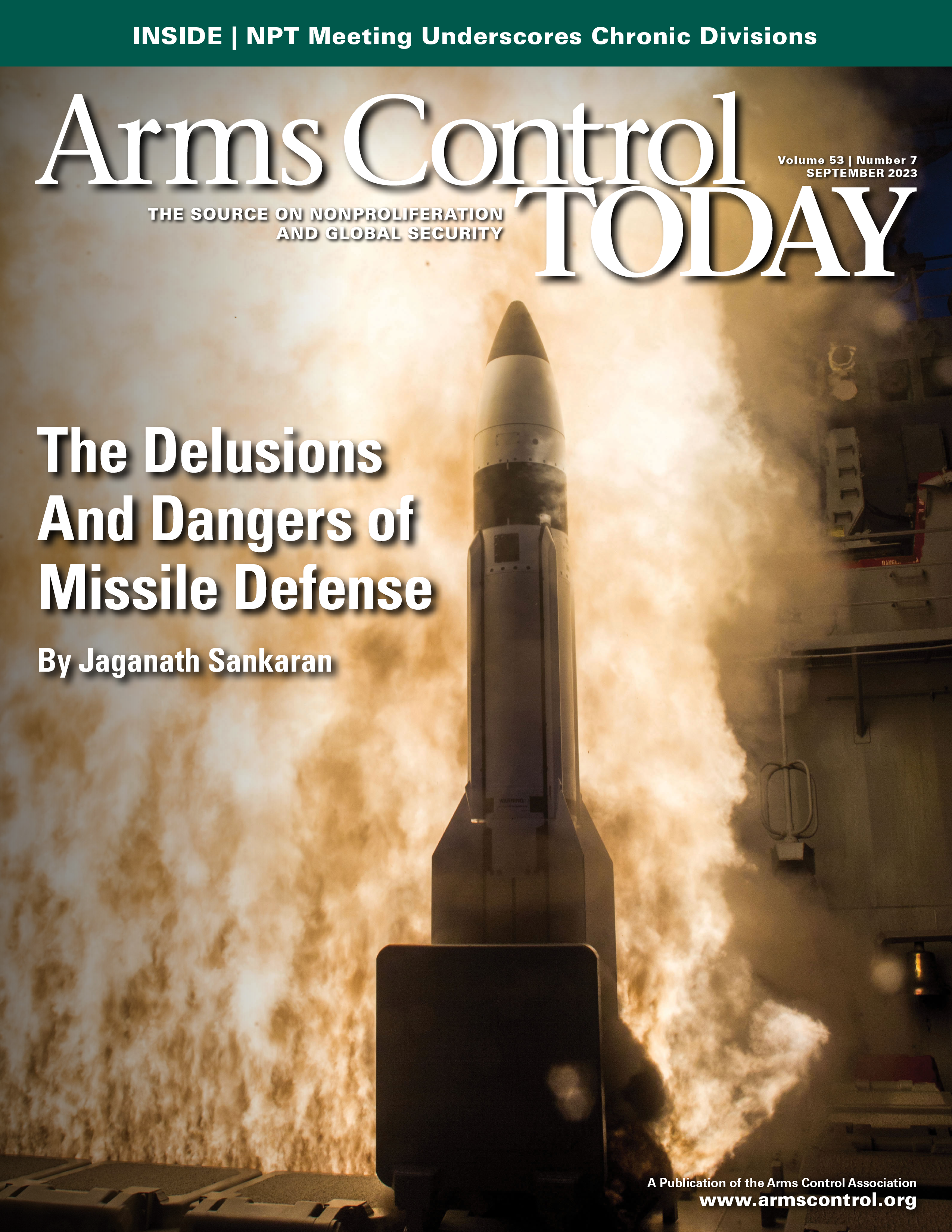
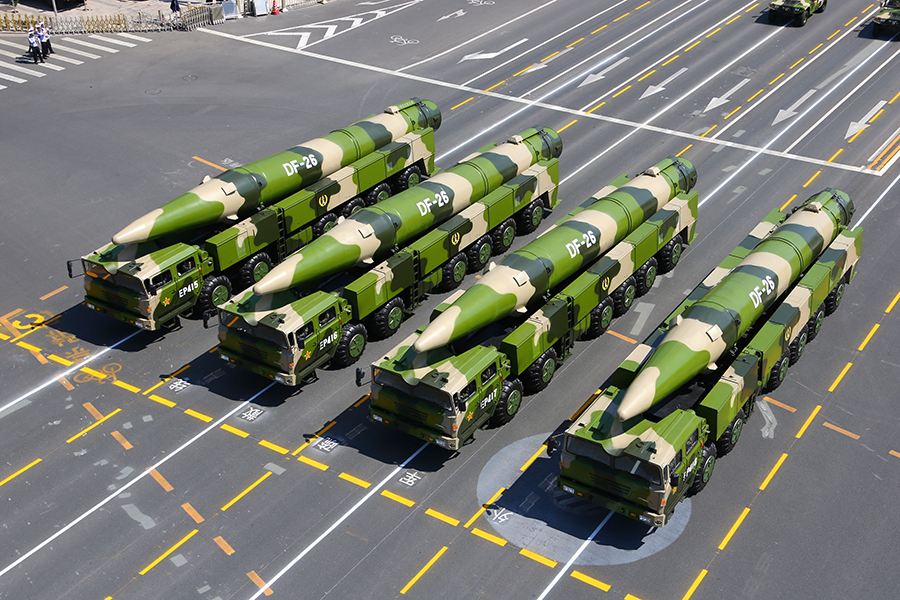 Historically, U.S. nuclear doctrine has insisted that homeland missile defense does not and cannot affect the strategic deterrent between major nuclear powers. For instance, the 2022 Missile Defense Review explicitly acknowledges that “the United States will continue to rely only on strategic deterrence” against Russia and China.
Historically, U.S. nuclear doctrine has insisted that homeland missile defense does not and cannot affect the strategic deterrent between major nuclear powers. For instance, the 2022 Missile Defense Review explicitly acknowledges that “the United States will continue to rely only on strategic deterrence” against Russia and China.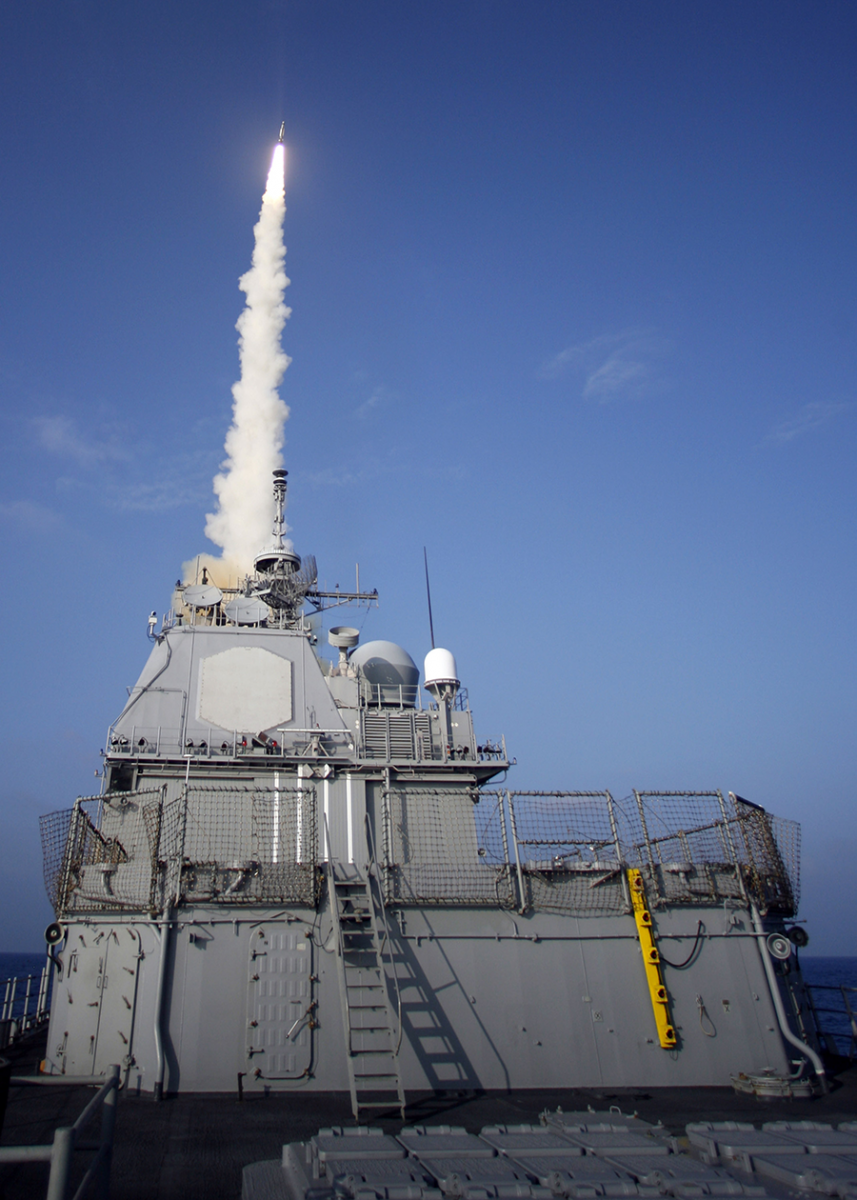 The architecture, in principle, portends the ability to realize a surprise breakthrough in strategic defensive capability against Russia and China. For instance, reacting to advances in North Korean ballistic missiles, the fiscal year 2018 NDAA mandated the U.S. Missile Defense Agency (MDA) to test the technological feasibility of the Standard Missile-3 (SM-3) Block IIA interceptor to defeat an ICBM threat.
The architecture, in principle, portends the ability to realize a surprise breakthrough in strategic defensive capability against Russia and China. For instance, reacting to advances in North Korean ballistic missiles, the fiscal year 2018 NDAA mandated the U.S. Missile Defense Agency (MDA) to test the technological feasibility of the Standard Missile-3 (SM-3) Block IIA interceptor to defeat an ICBM threat.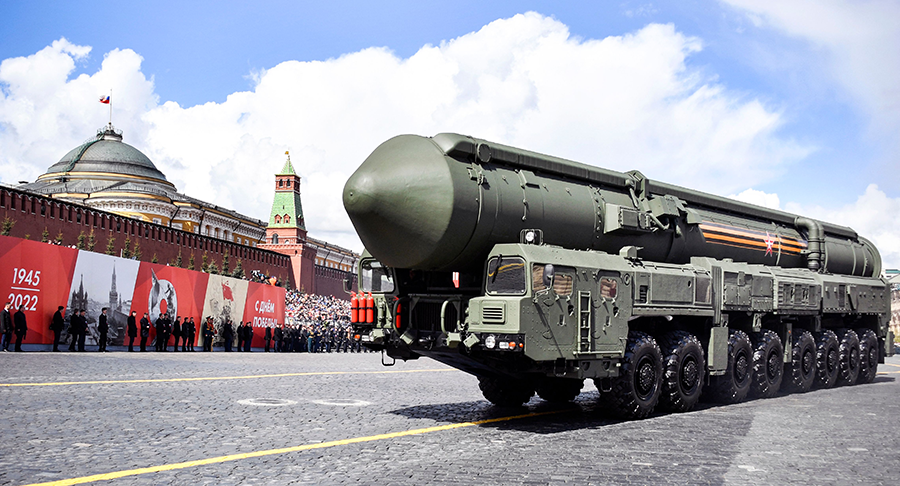 After the end of the Cold War, U.S. policymakers were willing to suspend the logic of strategic stability in the pursuit of missile defense. Yet, such a posture is no longer possible. The United States has declared the reemergence of great-power competition. The 2022 Nuclear Posture Review asserts the emergence of two major nuclear powers, Russia and China, as U.S. strategic competitors and potential adversaries. The review acknowledges “new stresses” on stability and deterrence.
After the end of the Cold War, U.S. policymakers were willing to suspend the logic of strategic stability in the pursuit of missile defense. Yet, such a posture is no longer possible. The United States has declared the reemergence of great-power competition. The 2022 Nuclear Posture Review asserts the emergence of two major nuclear powers, Russia and China, as U.S. strategic competitors and potential adversaries. The review acknowledges “new stresses” on stability and deterrence.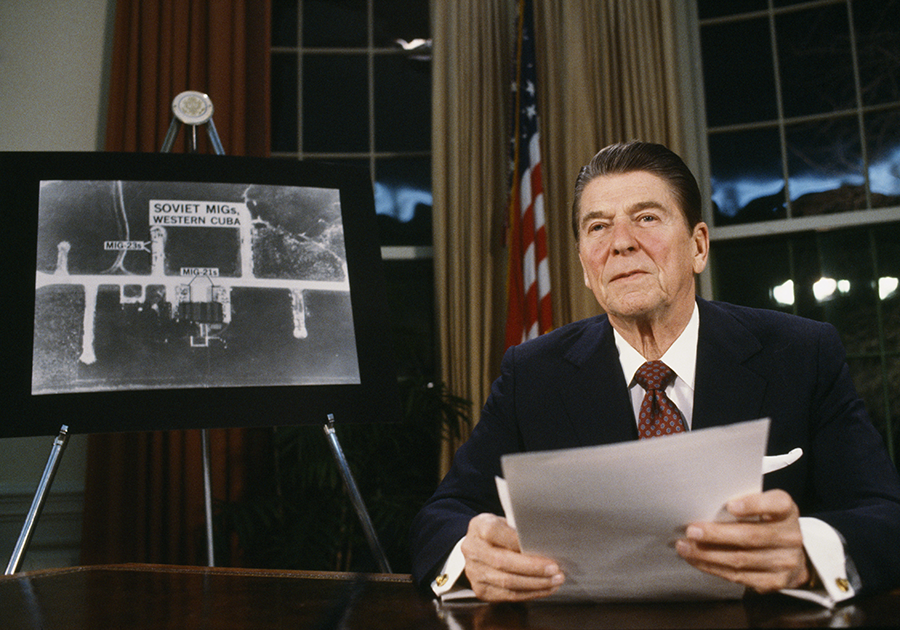 Less than a year after that March 1983 speech, the White House established the Strategic Defense Initiative (SDI), more commonly and derisively known as “Star Wars,” to conduct research into a wide variety of advanced technologies that could be used for land- and space-based missile defense.
Less than a year after that March 1983 speech, the White House established the Strategic Defense Initiative (SDI), more commonly and derisively known as “Star Wars,” to conduct research into a wide variety of advanced technologies that could be used for land- and space-based missile defense. During his first two years in the White House, Reagan increasingly viewed space in militarily competitive terms. A White House space policy study initiated in December 1982 was based on the premise that “[t]he Soviet Union [had] initiated a major campaign to capture the ‘high ground’ of space.”
During his first two years in the White House, Reagan increasingly viewed space in militarily competitive terms. A White House space policy study initiated in December 1982 was based on the premise that “[t]he Soviet Union [had] initiated a major campaign to capture the ‘high ground’ of space.”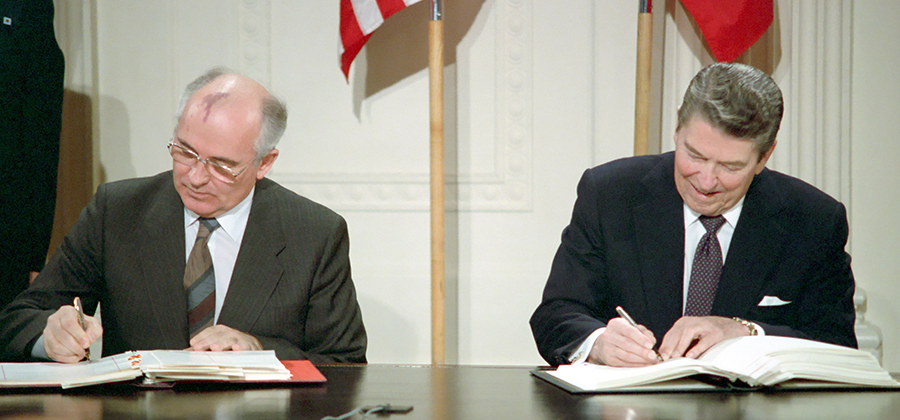 Tension over SDI remained at the forefront of Soviet-U.S. conversations concerning arms limits. By this point, Soviet defense and technical experts had completed a study on the feasibility of SDI and concluded that a leakproof defense was not possible. Nevertheless, key Soviet officials remained concerned about the implications of the U.S. program, which involved research into a wide variety of advanced technologies with missile defense and other applications. For example, more advanced command and control software and space-based sensors potentially would widen the information technology gap between Soviet and U.S. military forces. Moreover, some defense analysts in the Kremlin worried that even a partially functioning space-based missile defense could erode the credibility of the Soviet Union’s nuclear deterrent. Notably, there were a range of views on SDI within the Soviet government, and the lack of clarity about the future course of SDI research only created more anxiety in the Kremlin about the program’s long-term implications.
Tension over SDI remained at the forefront of Soviet-U.S. conversations concerning arms limits. By this point, Soviet defense and technical experts had completed a study on the feasibility of SDI and concluded that a leakproof defense was not possible. Nevertheless, key Soviet officials remained concerned about the implications of the U.S. program, which involved research into a wide variety of advanced technologies with missile defense and other applications. For example, more advanced command and control software and space-based sensors potentially would widen the information technology gap between Soviet and U.S. military forces. Moreover, some defense analysts in the Kremlin worried that even a partially functioning space-based missile defense could erode the credibility of the Soviet Union’s nuclear deterrent. Notably, there were a range of views on SDI within the Soviet government, and the lack of clarity about the future course of SDI research only created more anxiety in the Kremlin about the program’s long-term implications.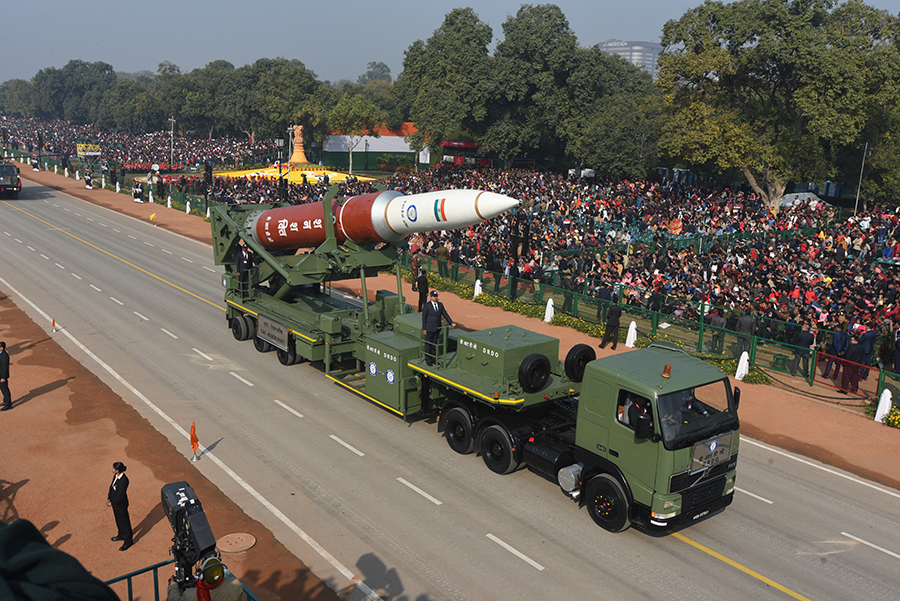 The technological connection between missile defense systems and ASAT weapons systems remains a persistent problem in the space security arena. Due to this missile defense-ASAT weapons entanglement, the proliferation of advanced missile defense capabilities simultaneously means the proliferation of ASAT-capable systems. India’s recent ASAT weapons test, which grew out of its missile defense program, is a case in point. Just as in the 1980s, attempting to separate missile defense from space in any dialogue on arms control will be impossible.
The technological connection between missile defense systems and ASAT weapons systems remains a persistent problem in the space security arena. Due to this missile defense-ASAT weapons entanglement, the proliferation of advanced missile defense capabilities simultaneously means the proliferation of ASAT-capable systems. India’s recent ASAT weapons test, which grew out of its missile defense program, is a case in point. Just as in the 1980s, attempting to separate missile defense from space in any dialogue on arms control will be impossible. In the movie, some Manhattan Project scientists petition against using nuclear weapons against Japan, but they are too late. Before Japan surrenders, two atomic bombs with explosive powers equal to 15 kilotons and 20 kilotons of chemical explosive, respectively, kill an estimated 220,000 civilians in the Japanese cities of Hiroshima and Nagasaki. Later, Oppenheimer says to President Harry S Truman, “Mr. President, I feel I have blood on my hands.”
In the movie, some Manhattan Project scientists petition against using nuclear weapons against Japan, but they are too late. Before Japan surrenders, two atomic bombs with explosive powers equal to 15 kilotons and 20 kilotons of chemical explosive, respectively, kill an estimated 220,000 civilians in the Japanese cities of Hiroshima and Nagasaki. Later, Oppenheimer says to President Harry S Truman, “Mr. President, I feel I have blood on my hands.” A former commander-in-chief of Strategic Command has reported, however, that in practical applications the translation of this presidential guidance became “minimize civilian damage to the extent possible consistent with achieving objectives.”
A former commander-in-chief of Strategic Command has reported, however, that in practical applications the translation of this presidential guidance became “minimize civilian damage to the extent possible consistent with achieving objectives.” The yields of U.S. warheads could be reduced to about 10 kiloton by replacing their fission-fusion second-stage explosives with inert objects of equal weight, as reportedly has been done for about 25 U.S. submarine-launched warheads. Yields could be reduced further without removing the secondary explosive by turning off the injection of deuterium-tritium fusion gas that boosts the yield of the fission “primary” explosive. Indeed, U.S. nuclear bombs and the warheads of U.S. nuclear-armed cruise missiles already have a dial-a-yield feature that reportedly allows a reduction of their explosive power from about 100 kilotons to as low as 0.3 kiloton.
The yields of U.S. warheads could be reduced to about 10 kiloton by replacing their fission-fusion second-stage explosives with inert objects of equal weight, as reportedly has been done for about 25 U.S. submarine-launched warheads. Yields could be reduced further without removing the secondary explosive by turning off the injection of deuterium-tritium fusion gas that boosts the yield of the fission “primary” explosive. Indeed, U.S. nuclear bombs and the warheads of U.S. nuclear-armed cruise missiles already have a dial-a-yield feature that reportedly allows a reduction of their explosive power from about 100 kilotons to as low as 0.3 kiloton.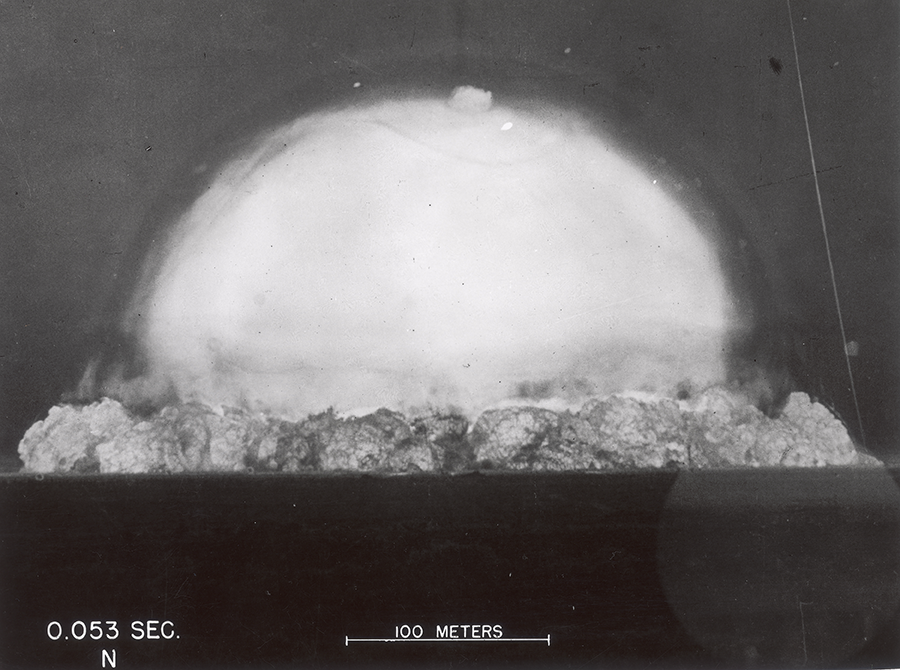 The two-sided character of atomic and nuclear weapons, in terms of their impacts on strategy and history, were not immediately clear to government officials in the latter 1940s and early 1950s. Some felt that the atomic bomb and, later, thermonuclear weapons should be used just as any other explosive device for military purposes. As arsenals grew and the implications of massive nuclear use became clearer, the concept of employing nuclear weapons primarily or exclusively for deterrence as a means of war prevention took hold. Nuclear deterrence could be made reliable and stable if states possessed a secure second-strike capability, guaranteed to inflict unacceptable retaliatory damage against the forces and society of the attacker.
The two-sided character of atomic and nuclear weapons, in terms of their impacts on strategy and history, were not immediately clear to government officials in the latter 1940s and early 1950s. Some felt that the atomic bomb and, later, thermonuclear weapons should be used just as any other explosive device for military purposes. As arsenals grew and the implications of massive nuclear use became clearer, the concept of employing nuclear weapons primarily or exclusively for deterrence as a means of war prevention took hold. Nuclear deterrence could be made reliable and stable if states possessed a secure second-strike capability, guaranteed to inflict unacceptable retaliatory damage against the forces and society of the attacker.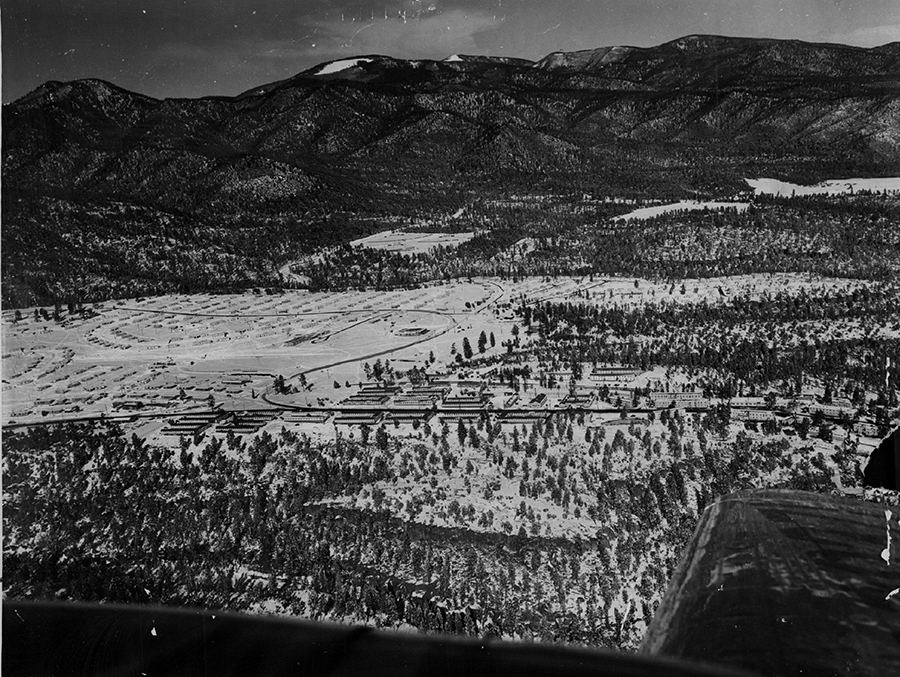 Scientists designed and built the world’s first atomic weapon in Los Alamos, New Mexico. Los Alamos sits on the Pajarito Plateau on the eastern edge of a volcanic complex
Scientists designed and built the world’s first atomic weapon in Los Alamos, New Mexico. Los Alamos sits on the Pajarito Plateau on the eastern edge of a volcanic complex Yet, for all its focus on the characters in that story, the film fails to truly humanize them. If it displayed a beautiful sun-dappled forest in which the audience could imagine itself walking, then maybe viewers could feel a slight connection to Oppenheimer, and he would not seem like such an enigma. If the film depicted the native New Mexicans and Indigenous people who did housework in the homes of the scientists and performed janitorial services at the lab, then maybe filmgoers could relate more to the sacrifice that these Americans endured to make this weapon a reality.
Yet, for all its focus on the characters in that story, the film fails to truly humanize them. If it displayed a beautiful sun-dappled forest in which the audience could imagine itself walking, then maybe viewers could feel a slight connection to Oppenheimer, and he would not seem like such an enigma. If the film depicted the native New Mexicans and Indigenous people who did housework in the homes of the scientists and performed janitorial services at the lab, then maybe filmgoers could relate more to the sacrifice that these Americans endured to make this weapon a reality.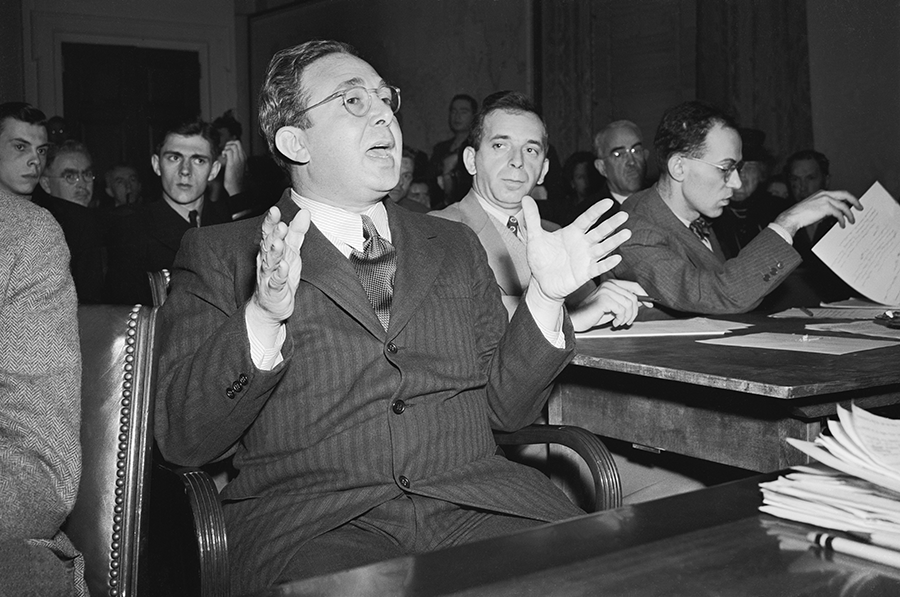 Although none of these early efforts to influence the government was successful, during the Cold War and afterward, Soviet and U.S. physicists and other scientists, sometimes working together, repeatedly made a positive impact on international and national policies. Two cases in particular highlight the essential role of scientists: achieving limits on nuclear explosive testing and working to keep defenses against long-range nuclear-armed ballistic missiles from triggering an arms race. Academic physicists were particularly active and remain concerned about and engaged with nuclear weapons-related issues today.
Although none of these early efforts to influence the government was successful, during the Cold War and afterward, Soviet and U.S. physicists and other scientists, sometimes working together, repeatedly made a positive impact on international and national policies. Two cases in particular highlight the essential role of scientists: achieving limits on nuclear explosive testing and working to keep defenses against long-range nuclear-armed ballistic missiles from triggering an arms race. Academic physicists were particularly active and remain concerned about and engaged with nuclear weapons-related issues today. Many U.S. scientists, especially seismologists, became involved in this debate. They debunked the large cavity argument and, as in previous cases, influenced opinion by engaging the public, policymakers, administration officials, and the media.
Many U.S. scientists, especially seismologists, became involved in this debate. They debunked the large cavity argument and, as in previous cases, influenced opinion by engaging the public, policymakers, administration officials, and the media.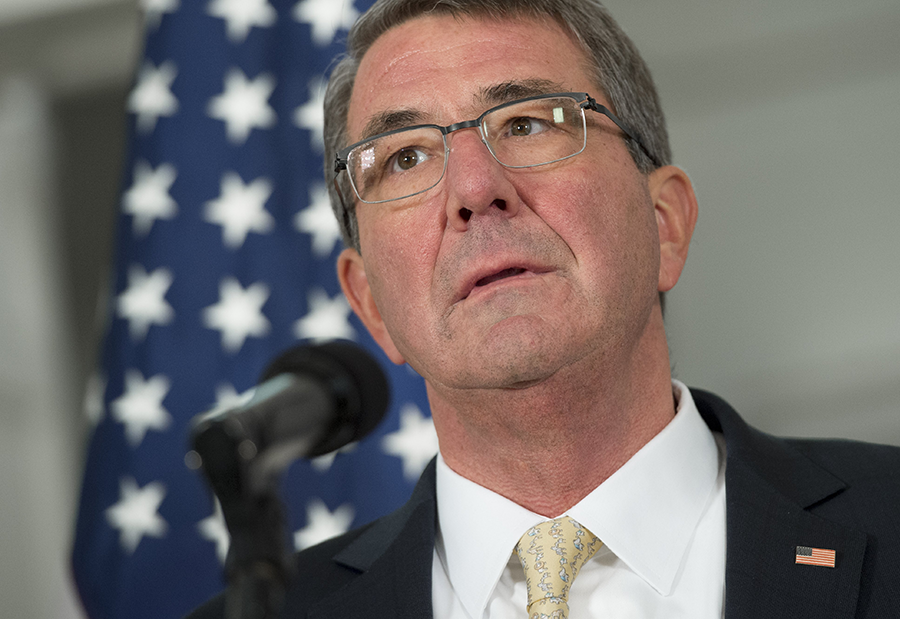 In 1985, SDI began giving grants to academics, declaring that “this office is trying to sell something to Congress. If we can say that this fellow at MIT will get money to do such and such research, it’s something real to sell.” The idea that the program wanted to use scientists to sell the program further enraged the physicists.
In 1985, SDI began giving grants to academics, declaring that “this office is trying to sell something to Congress. If we can say that this fellow at MIT will get money to do such and such research, it’s something real to sell.” The idea that the program wanted to use scientists to sell the program further enraged the physicists.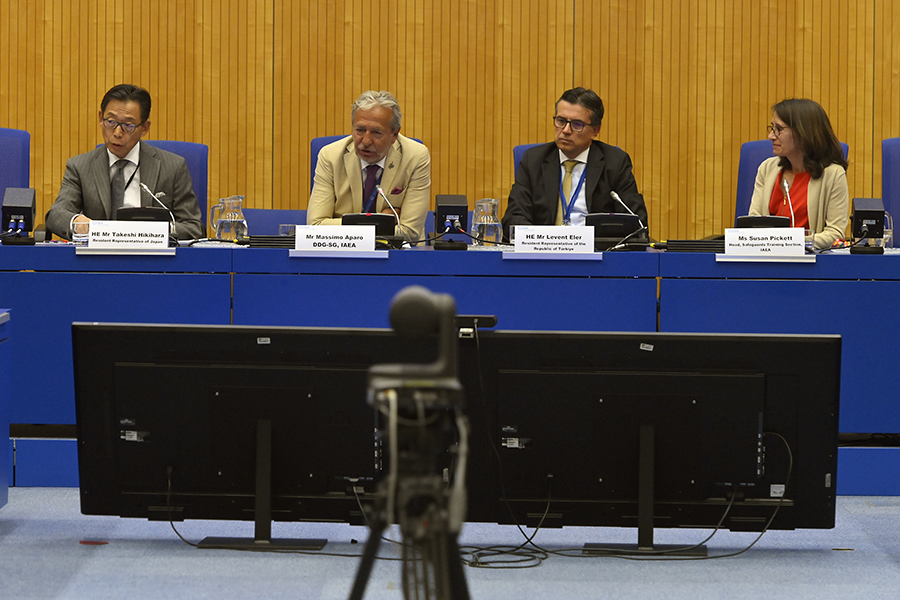 The results of the first preparatory committee meeting for the 11th NPT Review Conference underscored deep fissures over the implementation of key treaty obligations, differences between nuclear-weapon states and non-nuclear-weapon states over disarmament and deterrence, and simmering disputes about nuclear weapons sharing arrangements.
The results of the first preparatory committee meeting for the 11th NPT Review Conference underscored deep fissures over the implementation of key treaty obligations, differences between nuclear-weapon states and non-nuclear-weapon states over disarmament and deterrence, and simmering disputes about nuclear weapons sharing arrangements.